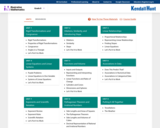
Per April
- Subject:
- Mathematics
- Material Type:
- Activity/Lab
- Assessment
- Full Course
- Homework/Assignment
- Reading
- Teaching/Learning Strategy
- Textbook
- Author:
- Illustrative Mathematics and Kendall Hunt
- Date Added:
- 09/17/2020


Per April
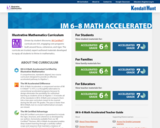
A comprehensive, standards-aligned, two-course curriculum designed to provide an effective accelerated pathway to Algebra 1.
IM 6–8 Math Accelerated, a compressed version of IM 6–8 Math™ 3.1415, is a thoughtful alternative to conventional accelerated programs because its design eliminates the possibility for unfinished learning as students arrive at Algebra 1. It includes all of the standards in IM 6–8 Math and compacts them into a two-year curriculum meant to be covered during the 6th and 7th grades. The pace is faster than IM 6-8 Math, but no crucial mathematical concepts are missed.
Only IM Certified curriculum is guaranteed to include the rigor, structure, and coherence as developed by our authors. Exclusively available from our IM Certified™ Partners, IM 6–8 Math Accelerated enables deep student learning through a carefully crafted scope and sequence that maintains a balance of conceptual understanding, procedural fluency, and meaningful applications. The IM authors made use of efficiencies in the standards to combine units from IM 6–8 Math and relocated or combined concepts as needed to maintain a thoughtful progression through the standards.
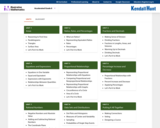
From April
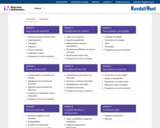
Per April
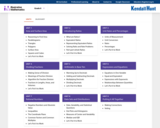
FROM APRIL
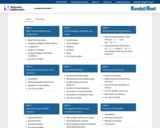
From April
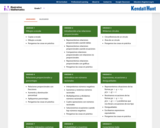
Per April
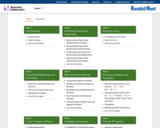
From April
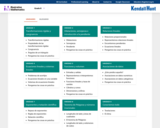
Per April
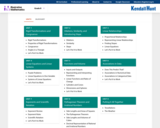
Per April
![Impact of Introduction of American Bullfrogs on Species Diversity [version 1.0]](https://oercommons.org/static/newdesign/images/materials/default-thumbnail-index.png)
This module explores the introduction of the American bullfrog on their ecosystem. Using species diversity calculations and data collection techniques, students explore how the bullfrog affected the species in its community. Students are introduced to calculations like species richness, species evenness, and species diversity indices. Also, this activity provides students an understanding of how this information is gathered in the field and provides them an opportunity to learn how to collect data themselves.
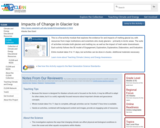
This is a five-activity module that explores the evidence for and impacts of melting glacial ice, with resources from major institutions and scientists who study glaciers -- primarily in Arctic areas. The suite of activities includes both glaciers and melting ice, as well as the impact of melt water downstream. Each activity follows the 5E model of Engagement, Exploration, Explanation, Elaboration, and Evaluation.
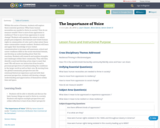
Within this series of lessons, students will explore these essential questions:
What basic human necessities are needed to thrive in society?
How do we measure wealth?
How to move from oppression to resiliency?
How to move from oppression to social change?
Students will examine the extent to which people pass judgment, discriminate and violate human rights in communities of color and to what extent these same communities remain resilient. Students will learn and apply their knowledge of non-violent communication to increase self awareness, school and career readiness skills in the social-emotional domain, and develop an understanding about their bio-reactions. Students will research and analyze strengths and challenges within their community. They will then identify a need and develop action steps to meet that need. We will move our instruction from broad to personal perspectives of understanding the conditions in the larger world as well as their own. By moving from the global/community perspective into the relational/historical experience and end with their personal perspective, students will develop a deeper understanding and appreciation of themselves within time and space.
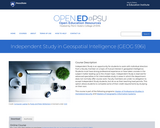
This course provides an understanding of how geospatial perspectives and technologies support all stages of emergency management activities, from small scale emergency management efforts to large scale disaster/humanitarian efforts. This includes learning about commonly used and emerging geospatial tools. It also includes an exploration of advancements in data collection, processing and analysis capabilities, such as unmanned aerial systems, geospatial artificial intelligence, volunteered geographic information, social media, and many more.

My goal is to merge New York State standards with Common Core Standards and Integrated Algebra Regent Standards for our 8th grade curriculum.

In this training, participants will be learning how to integrate computer science into their own classrooms. This scaffolded training will guide participants to eventually solve real-world problems and design their own lessons of integration.
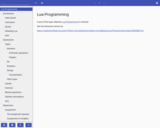
A port of the open wikibook Lua Programming to LiaScript.
This book aims to teach usage of the latest version of Lua. This means it will be attempted to regularly update it as new versions of Lua come out (Lua releases are infrequent enough that this should not be too difficult). Currently, the book is up-to-date for Lua 5.2, which is the previous version. If you are using Lua in an embedded environment that uses an older version of Lua in the 5.x branch (Lua 5.0 and Lua 5.1), the material should still be sufficiently relevant for you.
WikiBook: https://en.wikibooks.org/wiki/Lua_Programming
GitHub: https://github.com/LiaBooks/Lua-Programming

My name is Ahmed Malik and I am a 3rd year at the University of Chicago. I like to use visualizations/interactive elements to convey information in an aesthetic fashion. I believe that OpenStax can benefit from becoming more interactive, so I created an example of an interactive "textbook" and shared it with the OpenStax staff. They asked me to post it on this group so we can get more feedback. I would greatly appreciate all comments and ideas. My goal is to make something like this for all standard physics subjects, (mechanics, E&M, quantum mechanics, etc), and I believe it could even be applied to other subjects.
(PS: This is meant to be an interactive web experience, but I had issues posting it online, so I just recorded myself using it as another student would)

This text is accessible to anyone interested in the brain. It is specifically targeted to students and instructors of undergraduate neuroscience or biopsychology courses. It encourages an active exploration of the intersection of neuroscience with other disciplines through a large number of activities, demonstrations, reflection prompts, and critical thinking questions. The book complements material presented in more conventional neuroscience or biopsychology textbooks, portions of which are linked to throughout this text.
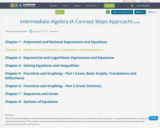
This Intermediate Algebra textbook was developed with consideration of neuroscience principles about learning. It is organized around the concepts of 'solving' and 'graphing'. The problem sets incorporate distributed and mixed practice to promote long term memory formation for the concepts and procedures involved in each section.